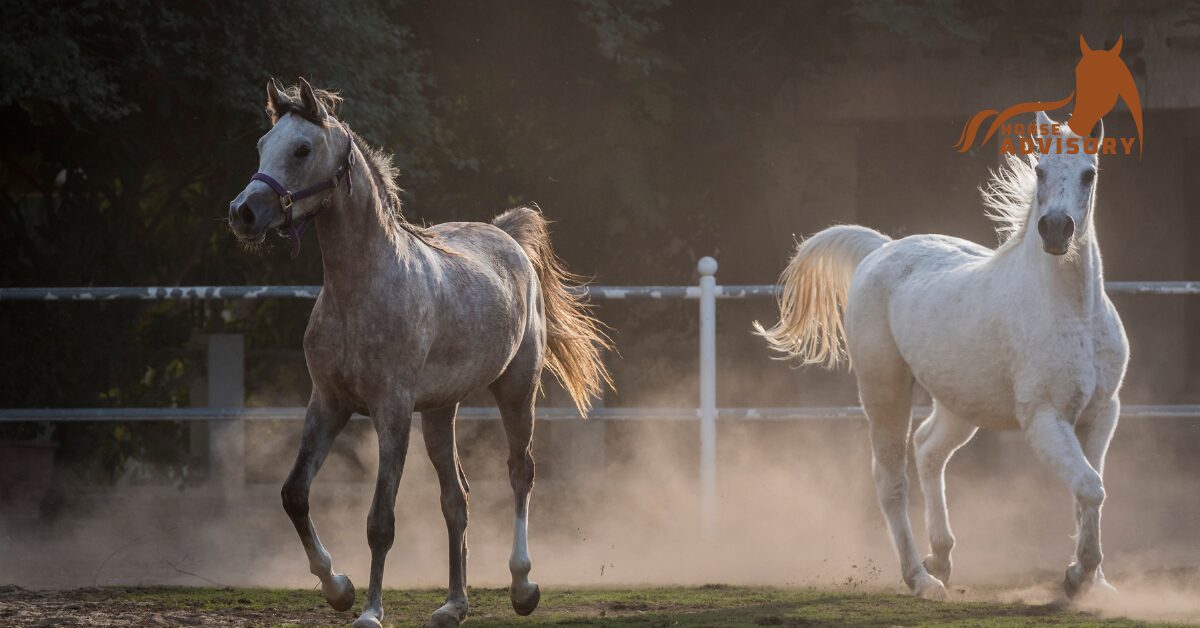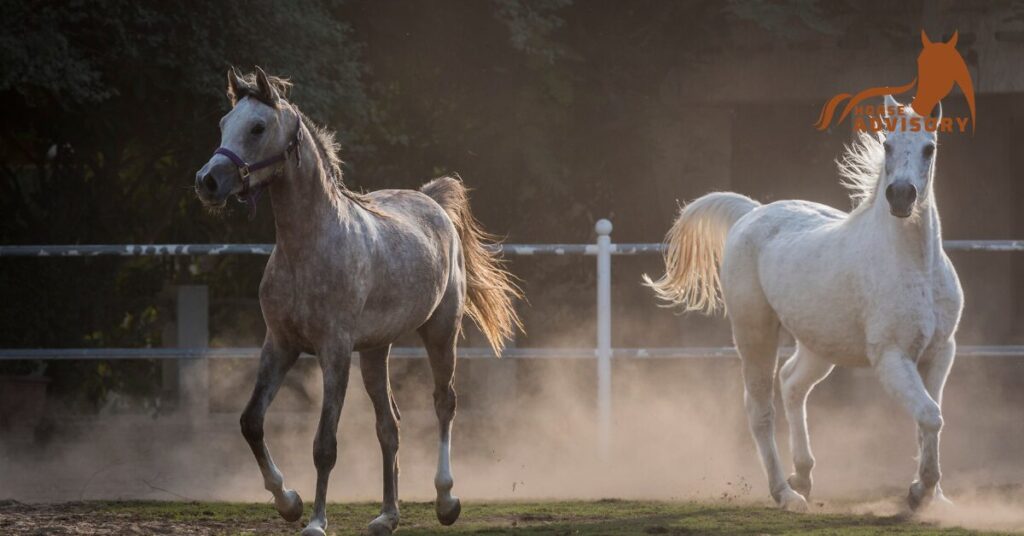Arabian horses, renowned for their beauty, intelligence, and endurance, have long held a special place in equine culture. Originating from the Arabian Peninsula, these horses have a rich history that spans thousands of years. Despite their esteemed status, numerous myths and misconceptions about Arabian horses persist. These myths often stem from misunderstandings or outdated information. This blog aims to dispel these myths and provide accurate, enlightening insights into the true nature of Arabian horses.
Myth 1: Arabian Horses Are Too High-Strung and Difficult to Manage
One prevalent myth is that Arabian horses are overly high-strung and challenging to handle. This misconception likely originates from their spirited and energetic demeanors, which can be mistaken for nervousness or unruliness.
In reality, Arabian horses are known for their intelligence, sensitivity, and affectionate nature. They form strong bonds with their handlers and exhibit a keen willingness to please. Their alertness and responsiveness, while sometimes misinterpreted as high-strung behavior, actually make them highly trainable. Effective management of Arabian horses involves understanding their needs, providing consistent training, and fostering a nurturing environment. With patience and proper handling, Arabian horses can excel in various equestrian disciplines.
Myth 2: Arabian Horses Are Fragile and Weak
Another misconception is that Arabian horses are fragile and lack the physical strength of other breeds. This myth may arise from their refined and elegant appearance, which some might mistakenly associate with frailty.
Contrary to this belief, Arabian horses are incredibly robust and resilient. They have been bred for endurance and stamina, traits that have been honed over centuries in the harsh desert conditions of the Arabian Peninsula. Arabian horses regularly dominate endurance racing, often outperforming other breeds in long-distance events. Their anatomical features, such as dense bone structure and efficient respiratory systems, contribute to their remarkable endurance and strength. Far from being fragile, Arabian horses are a testament to durability and perseverance.
Myth 3: Arabian Horses Are Only Suitable for Desert Environments
It is a common myth that Arabian horses can only thrive in desert environments. Given their origin, it’s understandable why this misconception exists; however, it does not reflect the breed’s versatility.
Arabian horses are incredibly adaptable and can perform well in diverse climates and terrains. They have proved their versatility by excelling in various equestrian disciplines around the world, including dressage, show jumping, and even Western riding. Their ability to adjust to different environments makes them a popular choice for equestrians in various regions. Whether in the blazing heat or colder climates, Arabian horses continue to demonstrate their adaptability and resilience.
Myth 4: Arabian Horses Are Too Small for Adult Riders
Some people believe that Arabian horses are too small to carry adult riders comfortably. This misconception can influence purchasing decisions and deter potential buyers from considering Arabian horses.
While Arabian horses are generally smaller than some other breeds, typically standing between 14.1 to 15.1 hands high, they have strong, well-muscled bodies capable of carrying adult riders. Their compact yet muscular build allows them to bear weight proportionate to their size efficiently. Many adult riders successfully ride and compete on Arabian horses, attesting to their strength and suitability. These horses are not only capable but often excel in various riding disciplines, proving that size is not a limiting factor.

Myth 5: All Arabian Horses Are Purebred
The belief that all Arabian horses are purebred is another common misconception. While Arabian horses indeed have a long history of pure breeding, there is also diversity within the breed.
Many Arabian horses are crossbred with other breeds to enhance certain traits, such as size or performance capabilities. These crossbreeds can still exhibit many of the desirable characteristics of purebred Arabians, such as intelligence, endurance, and a refined appearance. Understanding the bloodlines and pedigree is essential for breeders and buyers alike. While purebred Arabians are highly prized, crossbred Arabians also contribute significantly to the equestrian world, offering a blend of traits that can be advantageous in various disciplines.
Myth 6: Horses are not intelligent
The misconception that horses are not intelligent is far from the truth. Horses possess remarkable cognitive abilities and demonstrate intelligence in various ways. They can learn complex tasks, recognize human emotions, and remember training routines and commands. For instance, equine problem-solving skills are evident when horses navigate obstacles or find ways to reach food. Additionally, horses exhibit social intelligence, forming strong bonds with other horses and humans, and can even understand and respond to subtle cues from their handlers. These examples highlight that horses are not merely instinct-driven animals but are capable of thoughtful and adaptive behaviors, proving their intelligence beyond doubt.
Myth 7: Hot and cold-blooded horses have a difference in body temperature
Hot-blooded and cold-blooded horses do not actually have a difference in body temperature; the terms “hot-blooded” and “cold-blooded” refer to their temperament and physical characteristics rather than their literal body heat. Hot-blooded horses, such as Arabians and Thoroughbreds, are known for their spirited, energetic, and often more sensitive nature, making them excellent for speed and endurance activities. In contrast, cold-blooded horses, like draft breeds, are typically calmer, more docile, and have a sturdier build, making them well-suited for heavy work and pulling loads. Despite these differences in temperament and build, both types of horses maintain a similar body temperature, typically around 99-101 degrees Fahrenheit.
Myth 8: Horses are like “big dogs”
Aren’t horses really just big dogs? No, they are quite different. Your horse and your dog have a number of shared interests. They both like sleeping in a warm bed; they enjoy munching on crunchy treats and enjoy the company of their owners. What sets dogs apart from horses is they are prey that hunters might like to eat, because they are herbivores, and their social structure is quite different from dogs. Although many people believe their horses are companion animals, they are not the same as for dogs.
Myth 9: Horses only sleep standing up
According to The Huffpost, “This is somewhat of a myth. Horses can get a lot of sleep while standing up, but they lie down when they require REM sleep. Typically, the amount of REM sleep they require is very small, so they don’t need to lie down often. However, many horses lie down just because they feel comfortable or want to do so.”
The reason why horses sleep standing up (most of the time) is so they can easily get away from predators. But if they’re in an otherwise relaxed environment, then they’ll opt to lie down instead. Horses have this method called the “stay apparatus.” It’s a system of ligaments and tendons that keep them upright with relative ease.
Myth 10: Hooves are solid
Horse hooves may look like solid objects to most people because they give the impression of being tough and hard all the way through. Truth is, we don’t blame them! While they make look like solid objects, this isn’t exactly the case. Horse hooves are made of several different layers and structures with each specific and unique functions. There are three bones present in the hoof:
(1) pastern bone
(2) pedal or coffin bone
(3) navicular bone
Surrounding said bones in the laminae. The laminae are a sensitive layer of tissue that carries blood to all the components of the hoof. Underneath the laminae and the bones structures is the digital cushion. It is a rubberlike pad of tissue that acts as a shock absorber for when the horse’s hoofs make contact with the ground.
Myth 11: Horses Are Colorblind
One of the widespread myths about horses, including Arabian horses, is that they are colorblind. This is not true. Horses do see colors, although not in the same way humans do. Arabian horses, like all horses, have dichromatic vision, meaning they see two primary colors—shades of blue and green.
They may have difficulty distinguishing between red and green, similar to red-green color blindness in humans. Understanding their vision helps in training and selecting appropriate tack and equipment, making it crucial for Arabian horse owners to recognize their color perception capabilities.
Myth 12: Grinning, Laughing, and Smiling
Arabian horses are often noted for their expressive faces, sometimes leading to the misconception that they grin, laugh, or smile like humans. When an Arabian horse curls back its upper lip and seems to be “laughing,” it’s actually performing a behavior known as the Flehmen response.
This action helps them trap scents in their vomeronasal organ, offering more information about their environment, potential mates, or even new feed. It’s a natural and instinctive behavior, not an attempt to mimic human expressions.
Myth 13: Never Let a Horse Suffering from Colic Lie Down
A common piece of advice often passed down is to never let a horse suffering from colic lie down. While it’s true that severe rolling can cause a twisted intestine, gently lying down does not typically worsen colic. In fact, lying down can sometimes help relieve discomfort. The critical action here is to monitor the horse closely and consult a veterinarian immediately if colic is suspected. Preventing an Arabian horse from lying down unnecessarily can add stress to an already painful condition.
Myth 14: No Cold Water
There’s a persistent belief that you should never give horses cold water, especially after exercise, as it could cause colic or other health issues. However, research and experience have shown that offering a hot horse small amounts of cool water at intervals can actually prevent dehydration and help in recovery.
For Arabian horses, known for their endurance and participation in long-distance riding, appropriate hydration is essential. Cold water, when given in a controlled manner, poses no harm and ensures the horse remains hydrated and healthy.
Myth 15: Female Horses Are Easier to Handle
Another misconception is that female horses, or mares, are easier to handle than their male counterparts. The temperament of a horse is highly individual and not solely based on gender. Arabian mares, stallions, and geldings each have unique personalities.
While mares can sometimes exhibit moodiness due to their estrous cycle, many are gentle, reliable, and affectionate. Proper training and handling determine a horse’s behavior more than its gender. Thus, it’s essential to assess each Arabian horse individually rather than rely on generalized assumptions.
Conclusion
Dispelling these common myths about Arabian horses reveals the true nature of this remarkable breed. Far from being high-strung, fragile, or limited to desert environments, Arabian horses are intelligent, strong, and versatile. They are well-suited for a range of equestrian activities and environments, making them a valuable addition to any stable. Educating oneself about the true qualities of Arabian horses is crucial for appreciating their capabilities and forming informed opinions. As with any breed, seeking out reputable sources and firsthand experiences is the best way to understand and appreciate the unique attributes of Arabian horses.





